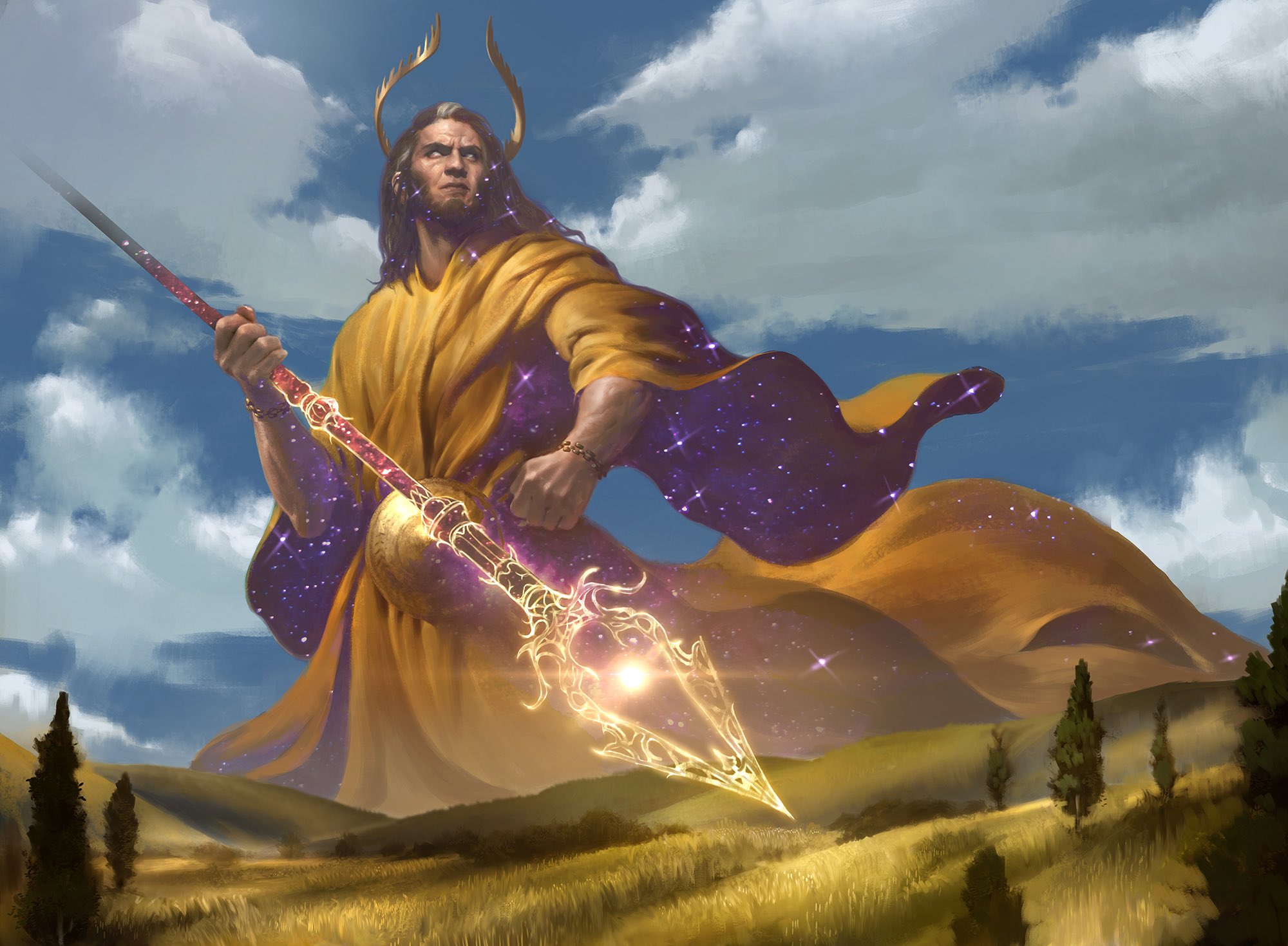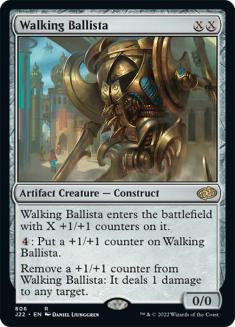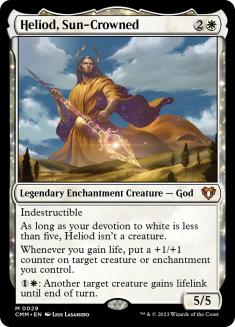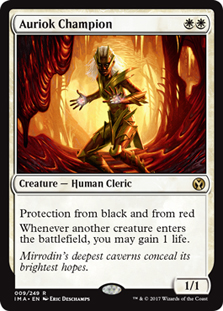Modern truly is at a local maximum right now. Despite the numerous ups and downs the format has faced over the last two years, it’s finally through the worst of the turbulence with a new look and an interesting path forward. From Krark-Clan Ironworks’ reign through Hogaak Summer™, with bans as format-shaking as Mox Opal and Faithless Looting to the more recent Arcum’s Astrolabe and Oko, Thief of Crowns, it’s been tough being a fan of Modern. There was never an opportunity to invest in a top-tier deck with confidence. The format was simply moving too fast, with too many warping cards, too many bans, and too much power in each new set.
Of course, a large part of the appeal of Modern is the idea that, like in Legacy or Vintage, you can invest in certain staple cards and archetypes and be confident that you’ll be able to play pretty much the same core cards for years and years. Barring anomalous busted synergies that pop up, we’re back to that regime.
Additionally, Modern is finally back in a place where a variety of fair decks across many different colors have the cards they need to compete with the unfair ones on sheer power level. Reactive spells from Force of Negation to the brand-new Skyclave Apparition are opening up normal decks to properly compete with the unfair archetypes that have been with Modern for many years.
And as we all know, once there’s a sufficient critical density of powerful enough hate cards with a wide enough range of metagame coverage, new fair decks start to emerge. We’ve seen it in Legacy, where Death and Taxes has grown over the last decade from a laughing stock fringe archetype to a remarkable part of the metagame that should be on the shortlist for best decks to bring to an upcoming tournament.
A similar phenomenon is occurring in Modern right now. It’s been years since Selesnya or Mono-White Hatebears first made an appearance in the format, but the ubiquity of Lightning Bolt and Path to Exile made the archetype barely ever more than a runner-up choice.
The Walking Ballista combo with Heliod, Sun-Crowned created a new reason to play white in the format, and suddenly a new blend of creature-based combo with a light smattering of hate permanents is poised to bring white the respect it deserves. As we all know, once you start grafting low opportunity cost combos on top of existing cores of cards, you can quickly take a deck from marginal to incredible. The threat of a combo forces opponents to play differently in a number of spots, and that in and of itself allows your other restrictive threats to be more impactful than they might otherwise be.
For example, when your opponent is incentivized to cast a removal spell on an early turn rather than a threat followed by a removal spell on the subsequent turn, you’ve bought yourself tons of time. Combos force your opponent to cast things in the wrong order, to hold up mana when they have things to spend it on, or to sideboard poorly. Grafting a combo on top of your normal deck allows you to exacerbate the impact of an informational asymmetry. You know whether you have the combo or not, whether you’ve sideboarded out certain pieces for alternative gameplans or not, and so on. Your opponent is guessing.
To use layman’s terms, when you have a combo, your opponent plays scared more often, and that is way more important than you would guess at first glance.
Sam Pardee, an incredibly well-respected player with a long resume of great finishes, most recently took a nearly-monocolored Heliod Combo deck to a Top 8 finish in a recent Modern MOCS Showcase event this weekend, bringing it into the spotlight and showing how a collection of seemingly innocuous white creatures could actually cut it in this format full of powerful combos and cheap interactive spells.
Creatures (30)
- 4 Auriok Champion
- 4 Walking Ballista
- 4 Giver of Runes
- 4 Ranger-Captain of Eos
- 4 Heliod, Sun-Crowned
- 4 Skyclave Apparition
- 2 Archon of Emeria
- 4 Luminarch Aspirant
Lands (23)
Spells (7)

Another white deck with Aether Vial, but this time its playing as a combo deck rather than an aggro deck. It’s got all the necessary pieces to qualify as a new take on an old strategy (protect valuable creatures that disrupt and annoy your opponents), and is a bold new piece in a Modern that has shifted dramatically towards creature combo over the last few weeks. It’s been blessed with multiple key pieces from Zendikar Rising, all of which are major upgrades over previous inclusions. Luminarch Aspirant speeds up the combo by a full turn, allowing a 1/1 Walking Ballista to immediately boost to the relevant size for comboing with Heliod, 2/2. Skyclave Apparition is just the card that white needed to compete in Modern, no question. It’s like a three-mana white Ravenous Chupacabra, but it hits other permanent types too. It’s just an absolutely incredible card.
So why did Sam choose to go with mono-white? And why did he play some unusual maindeck choices? It makes sense, of course, once you dive into the complexion of Modern today. Once creature-based combo becomes good, the immediate next step is for disruptive, removal-heavy decks with cheap threats to prey on those creature combo decks. For example, Rakdos Death’s Shadow (Lurrus) and Mono-Red Prowess (Obosh). Those two decks are so good at casting one-mana removal spells over and over while pressuring and refueling that they are the natural predators of any deck that plays one-mana creatures.
That’s where Auriok Champion comes in. How in the world do either of these predator archetypes beat that card? I see a few Kozilek’s Returns and Engineered Explosives in the sideboards, but not enough to consistently have it in the post-sideboard games. Auriok Champion is the best card to fight those natural next-level decks, so the Heliod Combo archetype that maximizes its Auriok Champions is likely to win more.
Now, you can try to find your Auriok Champions (or other excellent creatures) with Collected Company, which the Selesnya version of this archetype does with gusto. But Collected Company is a four-mana spell, and we want to maximize Aether Vial here, which means it’s understandable that we’ll just maindeck all four copies and assume that they will come up enough to really put a thorn in the side of any Rakdos opponents we encounter.
But let’s not dance around the elephant in the room. There has to be a reason to play this version over another. Whenever you choose to play one archetype, decklist, or card choice, you’re choosing not to play every other option. And Collected Company is a powerful draw towards a totally different shell for the same combo. Clearly, when comparing this list to, say, the Selesnya version of Heliod Combo, the initial impression might be that the mana advantages of, say, the Arbor Elf + Utopia Sprawl synergy is at least as powerful, if not moreso, compared to the Aether Vial deck full of three-drops.
Here’s an example of the alternative:
Creatures (28)
- 4 Spike Feeder
- 2 Auriok Champion
- 4 Arbor Elf
- 1 Spellskite
- 2 Scavenging Ooze
- 2 Walking Ballista
- 1 Giver of Runes
- 3 Ranger-Captain of Eos
- 4 Heliod, Sun-Crowned
- 3 Conclave Mentor
- 2 Skyclave Apparition
Lands (22)
Spells (10)

There are some mighty powerful cards in the other Heliod deck, so let’s talk about why we want to play with a nearly monocolored manabase, with only a hint of red disruption in the sideboard instead.
Spoiler: the hint of red is the reason to play this version.
Boil is one of the single most powerful sideboard cards in Modern right now. If it weren’t for Boil, there would be little reason to play these disruptive decks full of small-ball creatures against the Uro, Titan of Nature’s Wrath powerhouse decks.
Why play with these low-end creature-combo decks that don’t put on a meaningful clock and don’t really disrupt the opponent when you could play with a mix of the best spells across four colors in Modern? Wrenn and Six is busted. Uro is busted. Omnath, Locus of Creation is busted. The whole archetype is simply full of incredible cards, but it has a pronounced weakness to the card Boil. To a lesser extent, the same is true with Blood Moon and/or Magus of the Moon. We’re seeing the red aggro decks pick up full playsets of Blood Moon to fight back against Uro and Omnath right now. A deck playing with four colors is almost assuredly going to be soft to these effects, and it’s no surprise that a deck starting with four Giver of Runes is able to find success by playing a few of the most disruptive cards for the number one archetype in the format.
Besides, if you slip through an Aether Vial on the first turn or draw a Cavern of Souls at any point during the match, you’re likely going to be able to outmaneuver the opponent’s counterspells and force your combo through their interaction regardless.
As always with these white creature decks, there is no “best version” of the deck. There’s merely a best version for right now. On any given day, different metagame compositions mean that you may want to have more raw power and nut draw potential with Arbor Elf and Utopia Sprawl, or more resilience to the popular disruption and common interaction with Boil, Magus of the Moon, Aether Vial, and Cavern of Souls. You may want to have four maindeck Auriok Champion to really damage the aggro decks, or you may want to have the capability of playing Veil of Summer to combat control.
On this particular day, with the Modern metagame shaping up the way it has, there’s less of a need for accelerating out the combo kill (or an infinite life combo) as swiftly as possible. The less cheap removal there is in the format, the better the more nut-draw-prone archetype becomes. The more removal there is, along with more general interaction, more multicolored midrange decks, and more Islands, the more you want to include the red splash. The pressures of one ubiquitous good-stuff deck that’s hard to beat in a fair fight makes the format do strange things!
I’m excited to see what happens as white becomes a truly powerful color in Modern. There are several viable combo archetypes in white, and it’s finally at the point where shades of Legacy are palpable. For the first time in Modern’s history, I’m going to be truly scared of just getting blown out if my opponent leads on Plains, Aether Vial, go. Knowing that no matter what, your opponent is only a draw step away from getting right back into the game is a sickening feeling in a format as swingy as Modern.
Then again, that’s what makes it so enticing, too!






